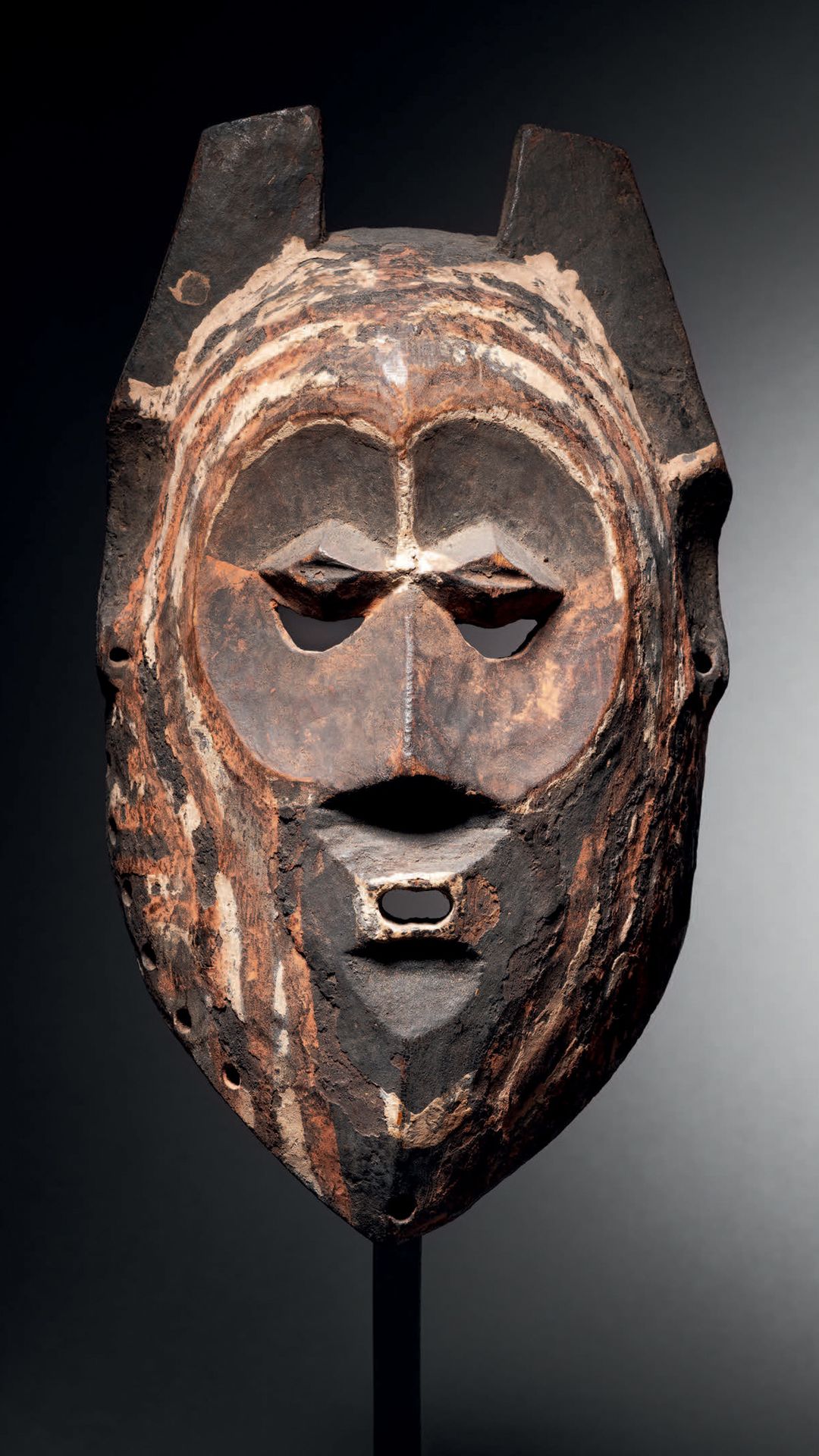Description
Bena Lulua mask, Democratic Republic of the Congo Polychrome wood H. 24 cm Bena Lulua mask, Democratic Republic of the Congo H. 9 ¾ in Provenance: - Jeanne Walschot (1896-1977), Brussels - Collection Jacques and Denise Schwob (1916-2008), Brussels, then by descent Rare Bena Lulua or Kete mask from the Southeast depicting a human face with stylized features. The diamond-shaped eyes are set in two semi-circles hollowed out on the surface. The nose is outlined by a slight triangle relief. The mouth contracts into a small rectangle. The face is crossed by concentric lines of ochre and beige. Two vertical projections originating at the level of the ears frame the face. According to Petridis (1995, pp.330-331), "the material and spiritual culture of the Southeastern Kete has many affinities with that of the Luluwa. Both peoples are said to have borrowed the initiation rite and the use of masks from the Tshokwe who, by the end of the 19th century, had spread widely from Angola to the North". Bena Lulua masks are particularly rare, being used in rituals surrounding circumcision and during the funerals of notables (Felix, 1987). See Verswijver (1995, fig.106) for a comparable Southeastern Kete or Bena Lulua mask from the Royal Museum for Central Africa (Tervuren, inv. RG3341 3/3).
90
Bena Lulua mask, Democratic Republic of the Congo Polychrome wood H. 24 cm Bena Lulua mask, Democratic Republic of the Congo H. 9 ¾ in Provenance: - Jeanne Walschot (1896-1977), Brussels - Collection Jacques and Denise Schwob (1916-2008), Brussels, then by descent Rare Bena Lulua or Kete mask from the Southeast depicting a human face with stylized features. The diamond-shaped eyes are set in two semi-circles hollowed out on the surface. The nose is outlined by a slight triangle relief. The mouth contracts into a small rectangle. The face is crossed by concentric lines of ochre and beige. Two vertical projections originating at the level of the ears frame the face. According to Petridis (1995, pp.330-331), "the material and spiritual culture of the Southeastern Kete has many affinities with that of the Luluwa. Both peoples are said to have borrowed the initiation rite and the use of masks from the Tshokwe who, by the end of the 19th century, had spread widely from Angola to the North". Bena Lulua masks are particularly rare, being used in rituals surrounding circumcision and during the funerals of notables (Felix, 1987). See Verswijver (1995, fig.106) for a comparable Southeastern Kete or Bena Lulua mask from the Royal Museum for Central Africa (Tervuren, inv. RG3341 3/3).
